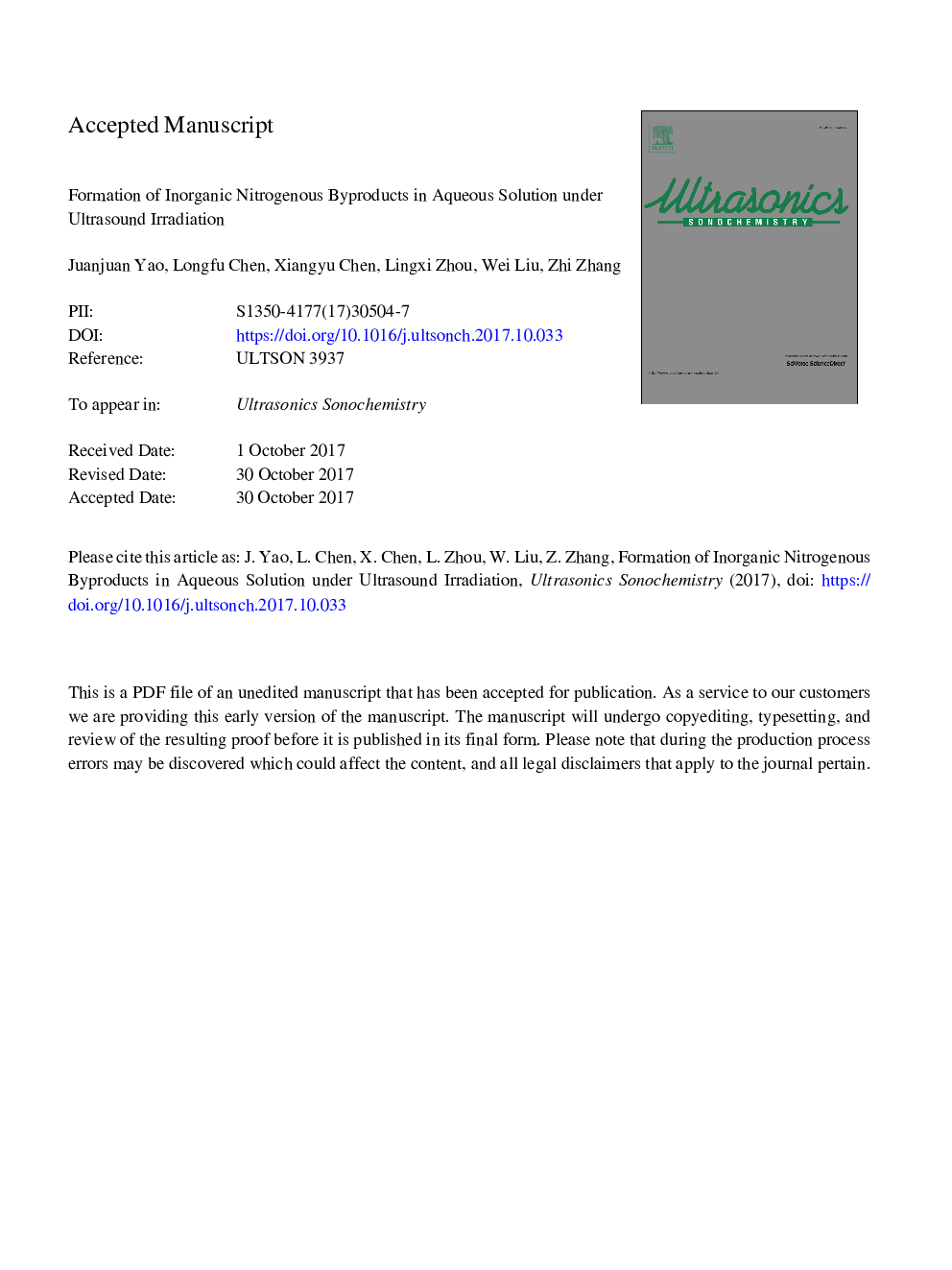| Article ID | Journal | Published Year | Pages | File Type |
|---|---|---|---|---|
| 7703013 | Ultrasonics Sonochemistry | 2018 | 22 Pages |
Abstract
The effects of ultrasonic frequency, power intensity, temperature and sparged gas on the generation of nitrogenous by-products NO2â and NO3â have been investigated, and the new kinetics model of NO2â and NO3â generation was also explored. The results show that the highest primary generation rate of NO2â and NO3â by direct sonolysis in the cavitation bubbles (represented by k1â² and k2â², respectively) was obtained at 600â¯kHz and 200â¯kHz, respectively, in the applied ultrasonic frequency range of 200 to 800â¯kHz. The primary generation rate of NO2â (represented by k1â²) increased with the increasing ultrasonic intensity while the primary generation rate of NO3â (represented by k2â²) decreased. The lower temperature is beneficial to the primary generation of both NO2â and NO3â in the cavitation bubbles. The optimal overall yields of both NO2â and NO3â were obtained at the N2/O2 volume (in the sparged gas) ratio of 3:1 which is near to the ratio of N2/O2 in air. The dissolved O2 is the dominant oxygen element source for both NO and NO2, compared with water vapor. Ultrasonic irradiation can significant enhance the recovery rates of dissolved N2 and O2 and thus keep the N2 fixation reaction going even without aeration.
Related Topics
Physical Sciences and Engineering
Chemistry
Chemistry (General)
Authors
Juanjuan Yao, Longfu Chen, Xiangyu Chen, Lingxi Zhou, Wei Liu, Zhi Zhang,
